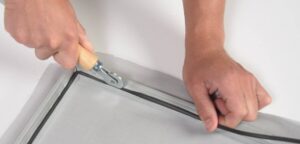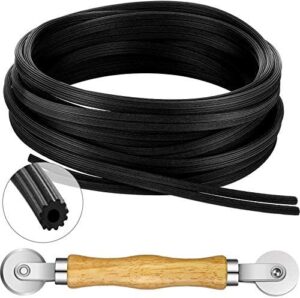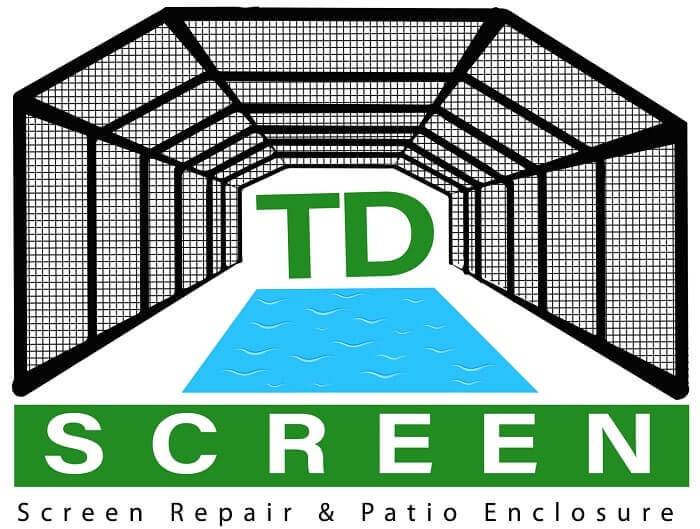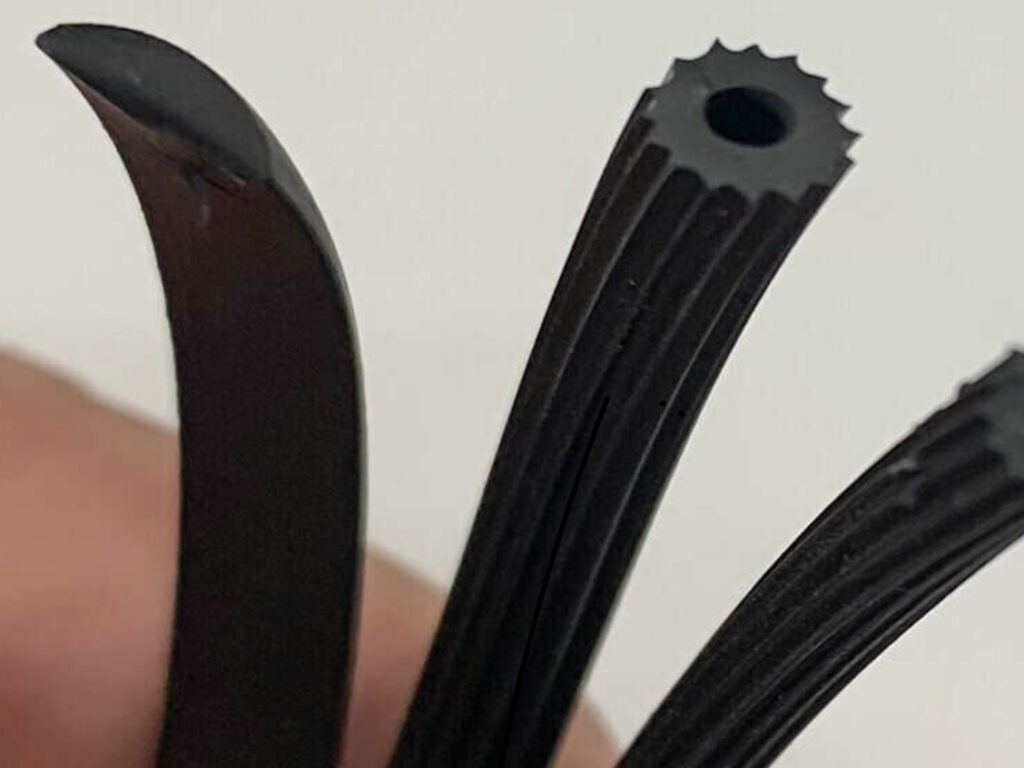Types of Screen Spline
When taking on a screening assignment, the spline for windows is, without a doubt, the topic that generates the most inquiries. Understandably, there isn’t as much information on spline as there should be, given the rarity of screening projects compared to other home improvement or maintenance tasks. In this blog article, we’ll aim to close that knowledge gap by providing practical advice to help you choose the best types of splines for your project.

Types of Screen Spline for Windows
1. EPDM spline for windows:
This UV-resistant pool screen spline is available. Rubber is employed in its construction, and chemicals are added to make it UV-resistant. It is well known that this type of spline is simple to install. Since the round EPDM spline is constructed of flexible rubber, it is resistant to chemical corrosion and ultraviolet radiation. This pool screen spline is more resilient and functions well on its own or in conjunction with a hollow core.

2. Solid Core Vinyl Spline for Windows:
The Screen Spline for Windows in the solid core vinyl version is renowned for its toughness. This is a significant reason for its ongoing appeal.
3. Foam Screening Spline for Windows:
Professionals in the building industry frequently select foam screen splines. This is a result of both its flexibility and elasticity. Additionally, it is a choice that is quite simple to install in small channels.
Compared to vinyl spline, foam core screen spline offers more flexibility and robustness. Since it has a bit more give when rolling in spline for a special window screen, it is the perfect choice in this situation. The foam core screen spline will still function even if your dimensions are slightly wrong.

4. Polyfoam Spline for Windows:
Spline for windows can also be made of polyfoam. Like electrical wire, it is delivered on rolls. This spline is available in various diameters. Splines made of foam resemble wire and are intended to provide increased sturdiness. They have tiny air bubbles, giving the window frame’s surface a smooth finish. Additionally, they are simpler to install than hard plastic screen splines.

5. Flat Screen Spline:
The flat screen spline is appropriate for framing glass edges and surfaces exposed to environmental dangers since it has a flat exterior. A flat screen spline, made of solid-core vinyl, is excellent for situations where durability is required. The purpose of flat screen spline is to prevent decay by withstanding the elements. Many homeowners and professional screeners use this spline on screened-in patios, porches, and home windows.

Ordering and Using Spline for Screen Repair:
Before placing an order for a window screen spline, you must know the dimensions of the frame’s spline groove. After this measurement, choose a screen spline the same width as the window frame. For a good installation, this is essential! Otherwise, the spline can be too large or thin to provide the necessary tight fit.
For commercial screening operations, screen spline is often offered by the foot, with options from 100 feet to 500 feet. A 100-foot roll should be plenty for the typical homeowner and provide extra spline for future Patio screen repairs. However, bigger roles are required for business owners. Professional screeners need a variety of spline alternatives on hand to complete various operations for house and business owners efficiently. Still, a homeowner might only want one kind and size of spline.
When to Replace the Screen Spline for Windows?
Although a high-quality window screen spline is designed to survive for many years, the elements may have impacted how long your spline will last. When you have splines produced from inferior materials, spline rot might occur. Natural materials like rubber are susceptible to the fungus that causes dry rot. The integrity of your window screen spline can also be impacted by factors such as high temperatures, UV radiation, oxidation, and ozone.
If your spline is dry-rotted or melted, it will need to be replaced to keep your window frames functional. To replace it, locate the spline end first. This is thicker at the edge, making it easier to identify. With a screwdriver, pry the spline up out of the groove and push out at least 20 inches so that you may easily pull the rest of the spline out.
You must do this with the utmost care, as the spline for windows can crack into pieces. If it is melted, you may be unable to remove the spline. Hopefully, it is only melted in a few spots, and you can still carefully pry it out. Sometimes, you will need to replace your spline for window screen frames.

